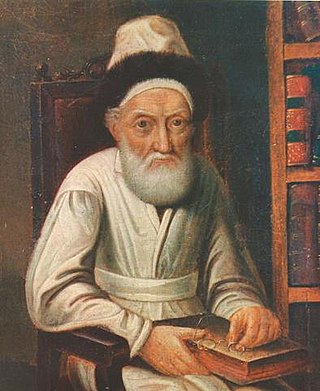
Menachem Mendel Schneersohn also known as the Tzemach Tzedek was an Orthodox rabbi, leading 19th-century posek, and the third rebbe of the Chabad Lubavitch Hasidic movement.
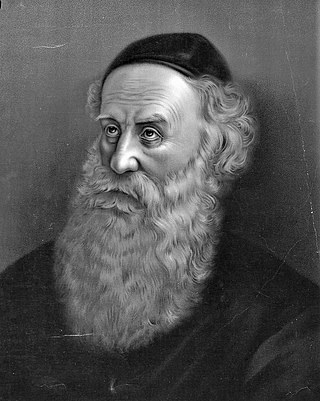
Shneur Zalman of Liadi, commonly known as the Alter Rebbe or Baal Hatanya, was a rabbi as well as the founder and first Rebbe of Chabad, a branch of Hasidic Judaism. He wrote many works, and is best known for Shulchan Aruch HaRav, Tanya, and his Siddur Torah Or compiled according to the Nusach Ari.

Shmuel Schneersohn was an Orthodox rabbi and the fourth Rebbe of the Chabad Lubavitch Chasidic movement.

Kehot Publication Society is the publishing division of the Chabad-Lubavitch movement.

The Kopust branch of the Chabad dynasty of Hasidic Judaism was founded in 1866 by Yehuda Leib Schneersohn after the death of his father Menachem Mendel Schneersohn, the third Chabad rebbe. It is named after the town of Kopys in the Vitebsk Region of present-day Belarus, where Yehuda Leib Schneersohn settled after his father's death.
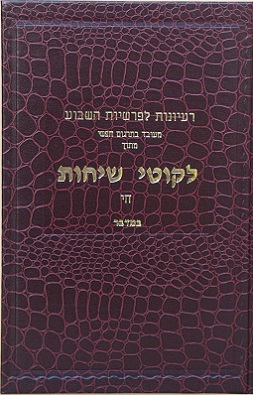
Likkutei Sichos, literally, "Collected Talks" contains both the scope and the core of the teachings of the Lubavitcher Rebbe, Rabbi Menachem Mendel Schneerson, and is the most authoritative source-text for Schneerson's way of explaining Judaism and the world writ large.
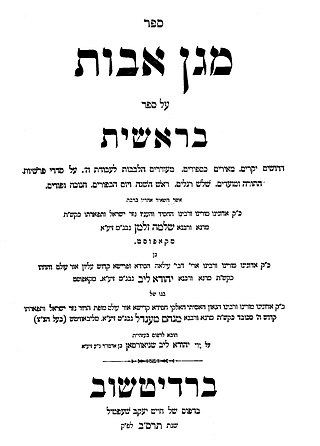
Shlomo Schneur Zalman Schneersohn was a Ukrainian Habad Hasidic rabbi who was the second leader of Kopust Hasidism from 1866 to his death in 1900.

Maamarim/Ma'amorim in Chabad Hasidism are the central format texts of in-depth mystical investigation in Hasidic thought. In Chabad philosophy, the textual format of the Maamar is used in a great number of published works.

Rabbi chaim Schneur Zalman Schneersohn of Liadi (1814-1880), was a Hasidic rebbe in the town of Liadi; He was the first rebbe of the Liadi branch of Chabad.
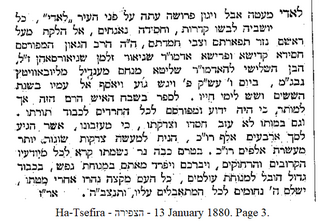
The Liadi branch of the Chabad Hasidic movement was founded after the death of the third rebbe of Chabad, Rabbi Menachem Mendel Schneersohn. The group was one of several that sought to succeed Rabbi Menachem Mendel, whose death created a dispute over his succession. The group was led by its founder, Rabbi Chaim Schneur Zalman, a son of Rabbi Menachem Mendel.

Chabad offshoot groups are those spawned from the Chabad Hasidic Jewish movement. Many of these groups were founded to succeed previous Chabad leaders, acting as rivals to some of the dynastic rebbes of Chabad. Others were founded by former students of the movement, who, in forming their own groups, drew upon their experiences at Chabad.

Rabbi Yitzchak Dovber Schneersohn of Liadi (1833-1910), was a Hasidic rebbe in the town of Liadi. Rabbi Yitzchak Dovber was the son of Rabbi Chaim Schneur Zalman of Liadi. Rabbi Yitzchak Dovber succeeded his father as rebbe for a number of Chabad Chasidim in Lyady. His brother-in-law, Rabbi Levi Yitzchak became a rebbe in the town of Sirotin (Siratshin). He and his brother-in-law were the last rebbes of the Liadi branch of Chabad.

Chabad philosophy comprises the teachings of the leaders of Chabad-Lubavitch, a Hasidic movement. Chabad Hasidic philosophy focuses on religious concepts such as God, the soul, and the meaning of the Jewish commandments.

Chabad customs and holidays are the practices, rituals and holidays performed and celebrated by adherents of the Chabad-Lubavitch Hasidic movement. The customs, or minhagim and prayer services are based on Lurianic kabbalah. The holidays are celebrations of events in Chabad history. General Chabad customs, called minhagim, distinguish the movement from other Hasidic groups.
Nissan Mindel was a Chabad Hasidic rabbi, author, editor, and served on the administrative staff of Rabbi Menachem Mendel Schneerson, the seventh Lubavitcher Rebbe.

Yom Tov Shel Rosh Hashana: 5666, known in Chasidic reference as Samech Vov, is a compilation of the Chasidic treatises by Rabbi Sholom Dovber Schneersohn, the fifth Rebbe of Chabad, from the Hebrew year 5666 (1905–06). This series of Chassidic essays is considered a fundamental work of Chabad mysticism. The Samech Vov series is one of the single largest works of Chabad philosophy. The work is titled as Yom Tov Shel Rosh Hashana after the opening words of the first treatise. The work is also referred to as Hemshech Samech Vov.

Toras Chaim is a two-volume work of Hasidic discourses on the books of Genesis and Exodus by the second Chabad Rebbe, Rabbi Dovber Schneuri. The work is arranged in a similar fashion as Likutei Torah/Torah Or, a fundamental work on Chabad philosophy authored by Rabbi Dovber's father, Rabbi Shneur Zalman of Liadi, the founder of the Chabad movement. Both works are arranged according to the weekly Torah portion.
Chaya Mushka Schneersohn was the daughter of Rabbi Dovber Schneuri, the second Rebbe of the Chabad Hasidic movement, and the wife of Rabbi Menachem Mendel Schneersohn the third Rebbe.

Siddur Im Dach is a Hasidic prayer book written by Rabbi Schneur Zalman of Liadi, the first Rebbe of the Chabad-Lubavitch movement. Accompanying the prayers are Hasidic discourses written by Rabbi Schneur Zalman.

Dvar Malchus or Devar Malchot (Hebrew: דְּבַר מַלְכוּת Də var Malkh ûtlit. 'a royal thing' is a Torah study publication distributed weekly related to Chabad Hassidism, the center of which contains Maamarim and Sichos and other sacred conversations from Menachem Mendel Schneerson the seventh Rebbe of Chabad-Lubavitchwell as well as daily lessons in the Chitas Miomonidies and Hayom Yom.














